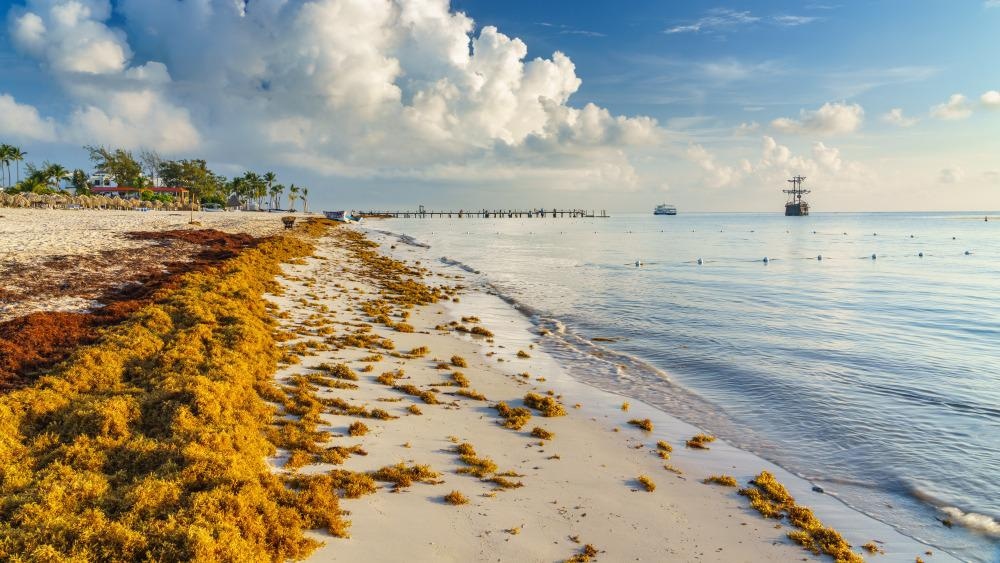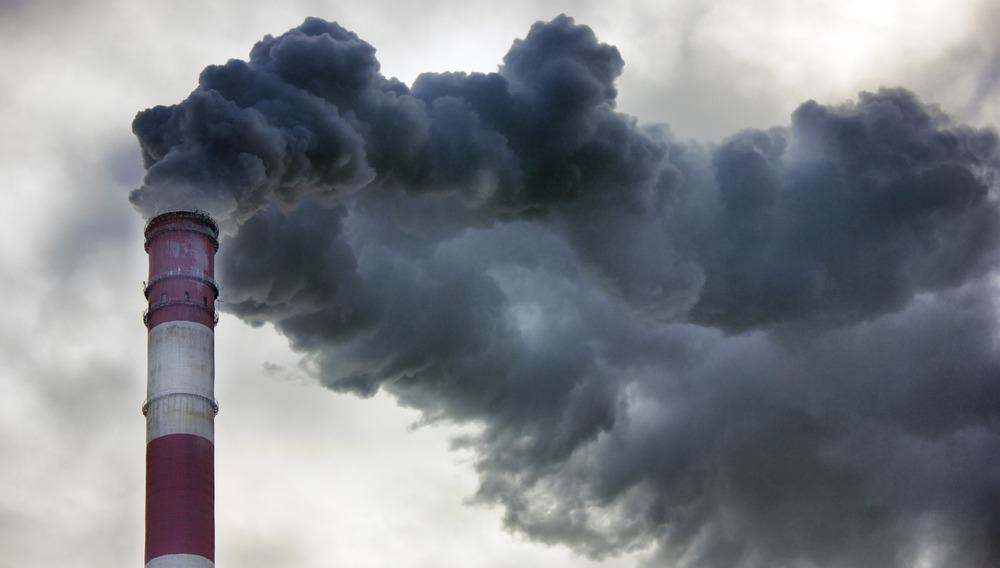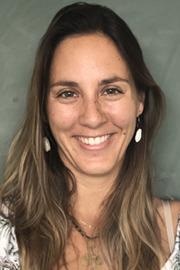AZoCleantech speaks to marine ecologist Dr. Mar Fernández who is a scientific advisor at Seafields. Fernández discusses a new offshore aquafarm that will grow and harvest seaweed to help remove billions of tons of carbon from the atmosphere each year.
Can you tell us a little bit about yourself and your role at Seafields?
I am a marine ecologist with broad expertise in algae and its role in the carbon cycle. I did my PhD in the Arctic and was shocked about the speed at which that ecosystem is changing due to climate change. In the last three years, I started investigating ways to solve the climate crisis by enhancing the natural carbon sequestration processes in the ocean. My role at Seafields as a scientific advisor is to make sure that all decisions are based on scientific evidence. We have to research and develop the best way (sustainable and transparent) to achieve our goals to sequester Gt of CO2 to restore our climate and avoid further negative impacts on our oceans.
How is seaweed an important part of Earth’s ecosystem?
Seaweeds are the trees of the ocean. They transform CO2 into sugars using sunlight and producing oxygen, providing the base of the marine food web. As primary producers, seaweeds have a crucial role in our ocean's food web. In addition, seaweed forests provide shelter for many different sea organisms.
Can you tell us how your seaweed carbon capture technology works?
We are currently developing an offshore aquafarm to grow the floating seaweed Sargassum fluitans and natans in a controlled and sustainable way by providing nutrients from the deeper waters.
The seaweed biomass that we produce will be harvested by electric aquatic drones, will be processed onboard a mother ship to extract valuable products, and the carbon-rich leftovers will be baled and stored in the deep ocean for long-term carbon sequestration. The entire process will be monitored and quantified to verify carbon capture.

Image Credit: S.Borisov/Shutterstock.com
Why did you choose Sargassum for your project?
Sargassum fluitans and natans, compared to other seaweeds such as kelp, has a great advantage in that it grows completely detached, floating, for its entire life cycle. This makes the cultivation infrastructure required much simpler, and also, the potential areas for cultivation are much broader than for coastal species.
This floating macroalgae originates from the Sargasso Sea but has been blooming out of control across the Atlantic Ocean due to global warming and excess nutrient pollution. When these vast quantities of Sargassum reach the coasts of the Caribbean, they cause multiple problems, damaging coastal ecosystems and affecting the tourism industry. When it decomposes on the beach or landfills, Sargassum dies, releasing its carbon back to the atmosphere. Any activities to prevent Sargassum from reaching the coast are actively avoiding CO2 emissions.
Many small companies are trying to use Sargassum as a raw material to create products that can replace fossil-fuel-based products. However, these companies require a stable supply of Sargassum, and at the moment, it is very variable. We aim to sustainably produce Sargassum in a controlled way, far away from the coast, to supply the high-value extracts to these companies.
Another excellent quality of Sargassum is that it is very efficient at taking up carbon dioxide because it has a very high carbon-to-nutrient ratio. This means that compared to phytoplankton, it can sequester 10 times more carbon with the same amount of nutrients provided.
In addition, even though it can be a habitat for marine organisms at the surface, once it reaches the bottom, especially if it does so in a baled format, we do not expect many seafloor organisms to feed on it. Studies on wooden falls have shown that carbon-rich material reaching the seafloor is hard to degrade, even more microorganisms. However, we will monitor this and assess the environmental impact on the deep sea selected storage areas.
How will this solution help remove one billion metric tons of carbon dioxide from the atmosphere?
Carbon accounts for around 30% of the dry mass of Sargassum, which means that with 7500 tons of wet weight Sargassum, you can sequester 1000 tons of CO2. We aim to upscale our offshore pilot farms in the ocean deserts, the subtropical gyres. By shredding and baling the seaweed, we aim to dramatically reduce remineralization at the seafloor, enhancing the natural carbon sequestration process by sinking seaweed.
How will this technology help tackle climate change challenges?
Our technology will help tackle the main climate change challenge, which is to reduce and sequester CO2 emissions in two ways:
i) By producing a sustainable raw material that does not require land space or chemical fertilizers to grow, and that substitutes fossil fuels as raw material for plastic, fertilizer, and fuels. By doing this, Seafields is helping to lower current CO2 emissions.
ii) By baling and sinking the carbon-rich leftovers after extracting the valuable products, we are ensuring that the carbon remains safely in the abyssal plain for hundreds if not thousands of years. This will help our society achieve net-zero emissions by removing those emissions that we cannot immediately reduce. In the long run, it will be removing the historical emissions from the atmosphere to restore our climate to safe pre-industrial conditions.
How will it be possible to ensure the ecosystem is not damaged? What research is needed to make sure this does not happen?
The location is important. Based on scientific criteria, the places selected to set up the farms and the deep-sea areas chosen to store the bales will be carefully selected. For example, the farms will be located in the ocean deserts where not much is happening in terms of productivity, and the deep sea storage areas will be located on the abyssal plane, far away from hydrothermal vents and other biological hot spots of deep-sea biodiversity. Previous studies on wood fall to the deep sea show that the remineralization rates can be slow depending on the area where the biomass sinks. Through collaborations with the research community, we aim to monitor both the surface and the deep sea locations to identify any potential damage to the ecosystem. An important thing to add to this is that both the surface and the deep ocean are already being significantly damaged by climate change. So any environmental impact assessments need to be looked at within the framework of the consequences for marine ecosystems if we do nothing about the CO2 problem.
Why is it important that we research and develop carbon capture technology?
To reach the Paris Agreement goals of limiting global warming to 1.5 ◦C above average, we have to drastically reduce emissions and start ramping up carbon capture technologies to remove those emissions that we cannot stop emitting fast enough. This is the only way to reach net-zero by 2050.
In addition, once we have managed to achieve a net-zero society (which means we will emit around 5 Gt of CO2 per year and sequester the same amount with carbon capture technologies), we have to start removing historical CO2 emissions to restore our climate. CO2 in the atmosphere was stable at around 280 ppm for the last 500,000 years when humans evolved. That is our safe CO2 concentration. Now we are close to 415 ppm (almost double). Thus, there is no way of stabilizing our climate without carbon capture technologies, and the earlier we start researching and developing them, the better. We still need to find the best solutions and make sure that they are deployed responsibly and sustainably.

Image Credit: Anastasiia Tymoshenko/Shutterstock.com
How does Seafields’ carbon capture technology help tackle past emissions?
First, we need to tackle emission reductions, then on going-emission carbon sequestration, and once we reach a net-zero society, we can start combating past emissions.
What does Seafields intend to do with the captured carbon?
Seafields intends to store it in selected sites at the deep sea (4000 m depth), monitor them, and map them if future generations need them as an energy reservoir.
Is there potential for this technology to be used on a global scale? What challenges may arise and how could they be overcome?
The offshore aquafarming technology can be used on a global scale. In particular, our approach of combining upwelling pipes for nutrient supply with floating seaweed aquafarms only makes sense in the Atlantic subtropical gyres. The challenges will be mostly engineering challenges, but we are confident that we can tap on the expertise of the oil and gas offshore industry that will soon have no other choice than to reinvent themselves to fight for a carbon-neutral system.
Seafields has announced that it will extract valuable products from seaweed before sinking it. What will you do with the extracted products?
Seafields will provide Sargassum year-round to industry to produce products that substitute fossil fuels such as biofertilizers, bioplastics, and biofuels. This will contribute to carbon dioxide emission reductions globally.
What are the next steps for the project?
The next step is to develop and test our first pilot farm in the southern subtropical Atlantic, collaborating with scientists from world-leading institutions to perform life cycle analysis, environmental impact assessments, and carbon sequestration verification.
Do you have any future projects you can discuss?
Some of our future projects involve working closely with the local communities impacted by the Sargassum arrivals in coastal areas of the Caribbean and West Africa to sequester the carbon in the Sargassum reaching the coast before it decomposes on the beach, avoiding CO2 emissions.
Where can readers find more information?
www.seafields.eco
Or check out any of our social media channels:
Seafields Solutions Limited (@SeafieldsSL) / Twitter
Seafields Solutions Limited: Company Page Admin | LinkedIn
Seafields Solutions Limitied (@seafieldssl)
Seafields | Facebook
About Dr Mar Fernández
 Mar is a marine scientist leading her research group at the Alfred Wegener Institute. She has published more than 20 peer-reviewed papers and has been on more than 10 sea-going expeditions in polar and tropical regions. Her research focuses on studying the impacts of climate change and finding the best way to enhance the solutions that the ocean can offer us to tackle the climate crisis.
Mar is a marine scientist leading her research group at the Alfred Wegener Institute. She has published more than 20 peer-reviewed papers and has been on more than 10 sea-going expeditions in polar and tropical regions. Her research focuses on studying the impacts of climate change and finding the best way to enhance the solutions that the ocean can offer us to tackle the climate crisis.
Disclaimer: The views expressed here are those of the interviewee and do not necessarily represent the views of AZoM.com Limited (T/A) AZoNetwork, the owner and operator of this website. This disclaimer forms part of the Terms and Conditions of use of this website.